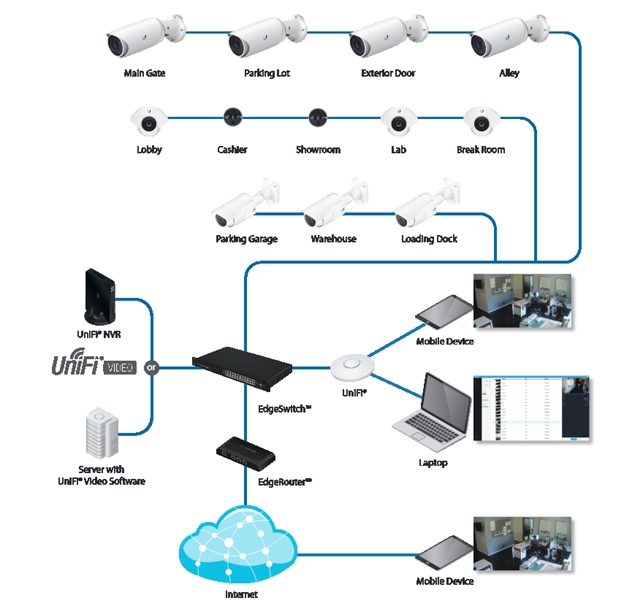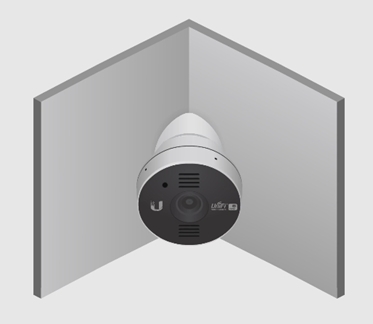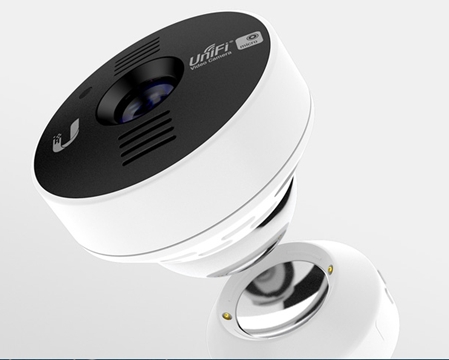Deploying video surveillance in a hurry, or we do not need wires

We didn’t have time to tell us about the new EdgeRouter family of routers , as Ubiquiti pleases us with a new novelty, this time in the field of video surveillance.
Consider a novelty in the line of video cameras - a wireless megapixel camera that fits in your pocket and does not require an Ethernet cable.
Looking ahead, I will say that, following the logic of the X line of equipment, the new product turned out to be more compact, more accessible and at the same time not worse in terms of parameters than the previous models.
The line of Ubiquiti video surveillance systems has so far included 3 models of video cameras, the NVR system, however, the NVR can also be deployed in software, as well as the operator’s seat.
| Model | UVC | UVC Dome | UVC PRO |
| Resolution | 720p | 720p | 1080P |
| Viewing angle | 56 to 36 degrees | 88 to 63 degrees | Optical magnification 3 times, from 44 to 81 to 15 by 28 degrees |
| Connection, power | Ethernet 24 volts | Ethernet 24 volts | By Ethernet 48 volts |
| Ir lights | Yes | Yes | Yes |
| Microphone | Yes | Yes | Audio input, audio output via optional cable |
| Integration with MFI | Not | Not | Yes |

All Ubiquiti cameras, although different in hardware design and resolution, had common features, namely, connection and power over a twisted pair.
This is a traditional solution, quite applicable if we talk about designing surveillance systems in advance, or deploying them in an office where there is a sufficient number of unused cable lines.
But what to do if you need to install video surveillance where there is no twisted pair and there is no possibility to stretch it, for various reasons.
For example, there is no SCS reserve in the office being removed, and laying the cable is difficult due to the lack of suspended ceilings and the unacceptability of installing cable trays on the walls.
Or you want to install video surveillance in the apartment, but do not burn with the desire to combine its installation with, at a minimum, transferring the baseboards to place the channel cable in them and gluing the vertical cable section to the wallpaper.
Or you just need a video peephole, and you don’t want to pull the cable or disassemble the door ...
Yesterday, Ubiquiti offered an interesting solution for this situation: Unifi video camera micro.
A compact device that fits in your pocket, but still quite dimensional, so as not to be prohibited from being imported as a means of covert surveillance, does not exceed the size of a golf ball and connects to the network via radio.
Due to its small size and weight, the device can be placed almost anywhere, on any wall, even the most fragile.

We should also mention the possibility of installation in a corner, where the device will be almost unnoticeable at all.
')

Technically, the device is a megapixel video camera with a microphone. An interesting mechanism is implemented to rotate the device - instead of a hinge, a magnetic mount is used, through which the camera is also supplied with power from a complete source.

Let's compare the novelty with the current model range:
| Model | UVC micro | UVC | UVC Dome | UVC PRO |
| Resolution | 720p | 720p | 720p | 1080P |
| Viewing angle | 54 to 79 degrees | 56 to 36 degrees | 88 to 63 degrees | Optical magnification 3 times, from 44 to 81 to 15 by 28 degrees |
| Connection, power | By Wi-Fi agn, 5 volt power from a complete source | Ethernet 24 volts | Ethernet 24 volts | By Ethernet 48 volts |
| Ir lights | Yes | Yes | Yes | Yes |
| Microphone | Yes | Yes | Yes | Audio input, audio output via optional cable |
| Integration with MFI | Not | Not | Not | Yes |
We see that the quality of the image of the system corresponds to other models of UVP except PRO.
It's nice that the camera didn’t have to abandon the infrared illumination on the way of minimalism, however, judging by the power consumption and size, the power of the backlight and the range of the camera decreased. Thus, it is still impossible to directly consider it as an analogue of larger UVP in the design of the observation network. And she has a slightly different viewing angle.
Transmitting video over WI-Fi is not a very straightforward solution. The system is equipped with a radio module capable of operating both in the 2.4 and 5 GHz range. Considering the large amount of interference and the small frequency range in the 2.4 range - I would highly recommend deploying such cameras only on the 5 GHz infrastructure, with proper network design, you can connect 10 or more video cameras to the access point.
I will not keep silent and about the cost of the decision. Abroad, the camera in a set with fasteners and power supply will cost $ 99, we, respectively, need to talk about about 110 USD, which is less than the cost of UVC Dome.
Source: https://habr.com/ru/post/255891/
All Articles